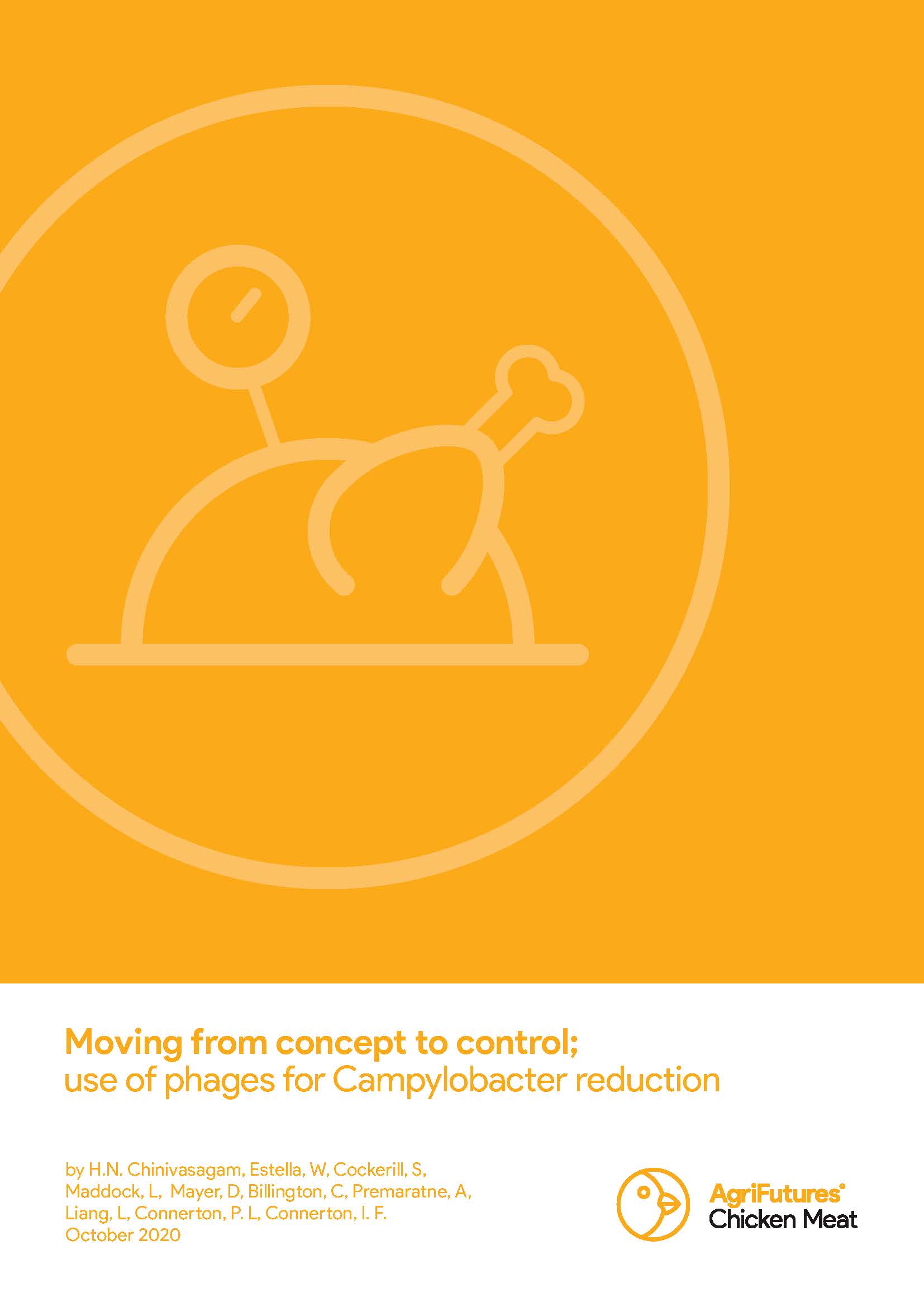Campylobacter naturally colonises the chicken gut, where it can reach high numbers and potentially contaminate the marketed product. A low number of organisms can cause human illness. This study explored a biocontrol option using bacteriophages (phages) to reduce Campylobacter numbers in chickens. Bacteriophages are viruses that infect and kill the target bacteria. These specific, Campylobacter-killing phages occur naturally in farm chickens, where they are already in a ‘predator–prey relationship’ with Campylobacter. The aim of this study is to better the outcome of this natural phenomenon. The study builds upon data from previous studies to progress the option of using Campylobacter bacteriophages to control Campylobacter levels in poultry.
Campylobacter phages sourced during a previous study were narrowed down to a 23-member cocktail candidate panel by screening against farm campylobacters. The outcomes of the laboratory studies undertaken provided a detailed understanding of the phage candidates. Some phages were subjected to detailed molecular analysis. With an understanding, the selected candidates were mixed as cocktails, which included all Australian phages or Australian candidates with the inclusion of New Zealand phages. The combined Australian and New Zealand phages cocktails performed the best against farm campylobacters from both countries.
The work undertaken provided a detailed understanding of phages, the approaches adopted demonstrated the potential progressing to a more advanced stage in working with these phages to develop a biocontrol option to control Campylobacter in poultry.
In summary:
• Poultry are a major source of Campylobacter, with the most important single source of campylobacteriosis considered to be broiler meat.
• Modelling indicates that on-farm poultry interventions can be very effective in reducing human infections.
• Development and validation of on-farm control options for reducing Campylobacter levels by 1.0 to 2.0 logs can realistically result in a 90% reduction of human infections.
• This study is progressing towards delivering an environmentally compatible option for the industry to achieve these reductions in Campylobacter on-farm
There is need to formulate and address selection of cocktails from a scale up perspective to ensure a viable commercialisation pathway to market
There is need to seek potential commercial entities to understand the way forward in providing a Australian regulatory frame work for the use of phages as bio-control agents by the Australian Poultry Industry





